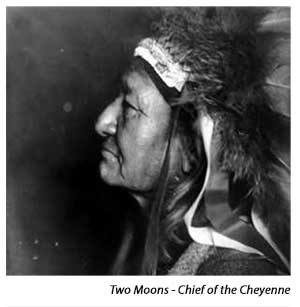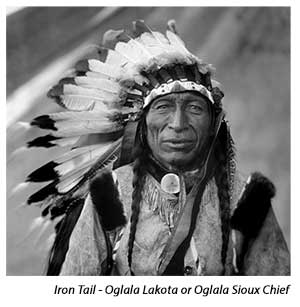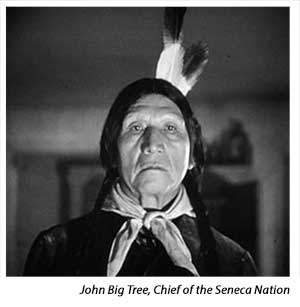The buffalo nickel is technically known as the “Five-Cent Indian Head” coin. It’s also commonly referred to as the “Buffalo Nickel” or “Bison Nickel” due to the bison on the back and often the “Indian Nickel” based on the portrait of a classic American native on the front. But have you ever wondered whose portrait decorates the front of the coin?
The Five Cent Indian Head coin was designed in 1912 by James Earl Fraser as part of the Mint’s campaign to beautify American coinage. It’s known as being one of the more distinct and eye appealing coins capturing the beauty of the American West. This unique coin stepped away from the traditional Lady Liberty by featuring a realistic portrait of a Native American front combined with a bison on the reverse to showcase the beauty of the American West. It was produced at the Philadelphia, Denver, and San Francisco Mints from 1913 to 1938.
James Earle Fraser, a former assistant of Augustus Saint-Gaudens who designed the ultra-high relief Double Eagle, was a prolific artist best known for his monumental “End of the Trail” Indian sculpture, created a truly unique design for the new coin. Interestingly enough, up until that time, the “Indians” portrayed on U.S. coins were primarily Caucasian with an Indian headdress, epitomized by Saint Gauden’s Greek Nike head on the 1907 Indian eagle. Fraser’s wanted a design that accurately portrayed Indians as they actually looked.
Who is the famous coin’s portrait depicting?
Surprisingly enough, the actual design on the coin’s front is not any one particular person. That’s right, Fraser used a combination of three Indian chiefs to create his unique design. Also, for his Indian head depiction, Fraser used living models, something virtually unheard of in an era when the classical profile from Greece or Rome was considered the highest ideal of art. Three different Indians, Iron Tail, Two Moons, and though often debated, Chief John Big Tree sat for this famous composite likeness. The finished portrait possesses great character and shows the rugged individuality of the American Indian.
So who were the Indian chiefs that modeled for Fraser?
It’s interesting to learn they were each famous in their own way. Although there is some debate about the third Indian chief, Fraser noted Two Moons and Iron Tail by name and could not accurately recall the third chief. Despite the controversy, Chief John Big Tree profusely claimed that he was actually the third model.
 Two Moons (1847–1917) was one of the Cheyenne chiefs who took part in the Battle of the Little Bighorn also known as Custer’s last stand, along with other battles against the United States Army. Two Moons was the son of Carries the Otter, an Arikara captive who married into the Cheyenne tribe. Perhaps known best for his participation in battles such as the Battle of the Rosebud against General Crook in the Montana Territory, the Battle of Little Big Horn, and what would prove to be his last battle which was that of the Battle of Wolf Mountain. Two Moons was finally defeated in the battle at Wolf mountain by General Nelson A. Miles and would inevitably surrender his Cheyenne band at Fort Keogh in April 1877. But it doesn’t end there.
Two Moons (1847–1917) was one of the Cheyenne chiefs who took part in the Battle of the Little Bighorn also known as Custer’s last stand, along with other battles against the United States Army. Two Moons was the son of Carries the Otter, an Arikara captive who married into the Cheyenne tribe. Perhaps known best for his participation in battles such as the Battle of the Rosebud against General Crook in the Montana Territory, the Battle of Little Big Horn, and what would prove to be his last battle which was that of the Battle of Wolf Mountain. Two Moons was finally defeated in the battle at Wolf mountain by General Nelson A. Miles and would inevitably surrender his Cheyenne band at Fort Keogh in April 1877. But it doesn’t end there.
After his surrender, Two Moons chose to enlist as an Indian Scout for the same General to whom he had not long since surrendered. Because of Two Moons' pleasant personality, the friendliness that he showed towards the whites as well as his ability to get along with the military, he was appointed head Chief of the Cheyenne Northern Reservation.
 Iron Tail was an Oglala Lakota or Oglala Sioux Chief and a star performer with Buffalo Bill’s Wild West show. It was well documented that he and “Wild Bill” also known as Colonel William Cody, were best friends. Iron Tail was not a war chief and had no remarkable record as a fighter like Two Moon, he wasn’t a "medicine" man or conjurer, but he was a wise counselor and diplomat. Iron Tail was known to be dignified, quiet, and never given to boasting and seldom even made a speech. He cared nothing for gaudy regalia, but he always had a smile, was fond of children, horses, and his friends.
Iron Tail was an Oglala Lakota or Oglala Sioux Chief and a star performer with Buffalo Bill’s Wild West show. It was well documented that he and “Wild Bill” also known as Colonel William Cody, were best friends. Iron Tail was not a war chief and had no remarkable record as a fighter like Two Moon, he wasn’t a "medicine" man or conjurer, but he was a wise counselor and diplomat. Iron Tail was known to be dignified, quiet, and never given to boasting and seldom even made a speech. He cared nothing for gaudy regalia, but he always had a smile, was fond of children, horses, and his friends.
Due to his association with Wild Bill Cody and the Wild West Show, Iron Tail was one of the most famous Native American celebrities of the late 19th and early 20th centuries and a popular subject for professional photographers who circulated his image across the continents.
 Chief John Big Tree was actually born Isaac Johnny John in Buffalo New York. Big Tree was a member of the Seneca Nation and an actor who appeared in 59 films between 1915 and 1950. One of his most famous films, She Wore a Yellow Ribbon (1949) also starred John Wayne.
Chief John Big Tree was actually born Isaac Johnny John in Buffalo New York. Big Tree was a member of the Seneca Nation and an actor who appeared in 59 films between 1915 and 1950. One of his most famous films, She Wore a Yellow Ribbon (1949) also starred John Wayne.
Big Tree claimed to be one of three Native American chiefs whose profiles were composited to make the portrait featured on the obverse of the United States' Indian Head Nickel and further claimed that his profile was used to create the portion of the portrait from the top of the forehead to the upper lip.
No matter who the third chief was, the compilation image for the obverse design depicts a large, powerful portrait of an Indian, facing right. The appearance is rough looking, unlike the smooth cheeks and other facial features that typify the many versions of Lady Liberty that have been on U.S Coins. We do know who the model was for the reverse side of the coin, and it is commonly mistaken for a buffalo but is actually a bison on the reverse.
Black Diamond, a bison from the Central Park Zoological Garden in New York, was said to be the model for the reverse. Fraser placed the buffalo on a mound, giving the appearance of strength and majesty. Yes, it is a bison on the nickel, not a buffalo. Technically, buffaloes are not found in the United States but found mostly in India and Africa. The mistake began when the first American settlers happened upon the Bison - they did not know what they were. The only animals they could really relate to were the Asian Water Buffalo. They started calling them buffalo for lack of a correct name, and the name stuck.
The first Buffalo Nickels were struck on February 22, 1913. They were unofficially introduced into limited circulation at the groundbreaking ceremony for the National American Indian Memorial in Staten Island, New York. Forty new nickels were sent to the ceremony to be distributed by President Taft to the attending Native American chiefs including Two Moons. (Despite the groundbreaking ceremony, the National American Indian Memorial was never actually built.)
The Buffalo Nickel was officially introduced into circulation on March 4, 1913, and within a week Chief Engraver Charles E. Barber was expressing concern about how quickly the dies were wearing out during production. According to his estimates, Buffalo Nickel dies were wearing out and breaking more than three times faster than the Liberty Head Nickel dies. Barber and others at the Mint also believed the Buffalo Nickel wouldn’t hold up very well to ordinary wear and tear, and that in particular the date and the “FIVE CENTS” marking would wear away completely. To correct these problems, Barber prepared several revisions to the design, Fraser approved them, and this slightly revised Buffalo Nickel went into production right away. An interesting side note, Barber’s revised dies wore out even faster after his revisions, and the changes never did help with the wear problem.
A Three-Legged Buffalo
One of the most interesting versions of the Indian head nickel is the 1937-D. The story goes that a worker at the Denver Mint polished a Buffalo Nickel die to remove “clash marks” — the marks and scratches that occur when dies are stored in direct contact with each other. Unfortunately, this worker did his job a little too thoroughly and not only removed all the clash marks but one of the buffalo’s legs as well. Amazingly, this mistake was not caught until after thousands of these “three-legged nickels” had been minted and put into circulation.
By the end of 1937, the Buffalo Nickel had been in production for the mandatory twenty-five years, and planning for its successor was well underway. It was to be replaced by the third coin to bear a likeness of one of our presidents, Thomas Jefferson. The Jefferson nickel continues in production to this day. By the late 1960s, few Buffalo Nickels were seen in circulation. It was the end of a series of coins that deserves more collector interest. In 2006, the image was reused for a special commemorative $50 gold piece --the USA's first 24k (pure gold) coin.
BUY INDIAN HEAD NICKELS ONLINE














































